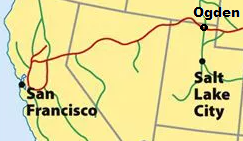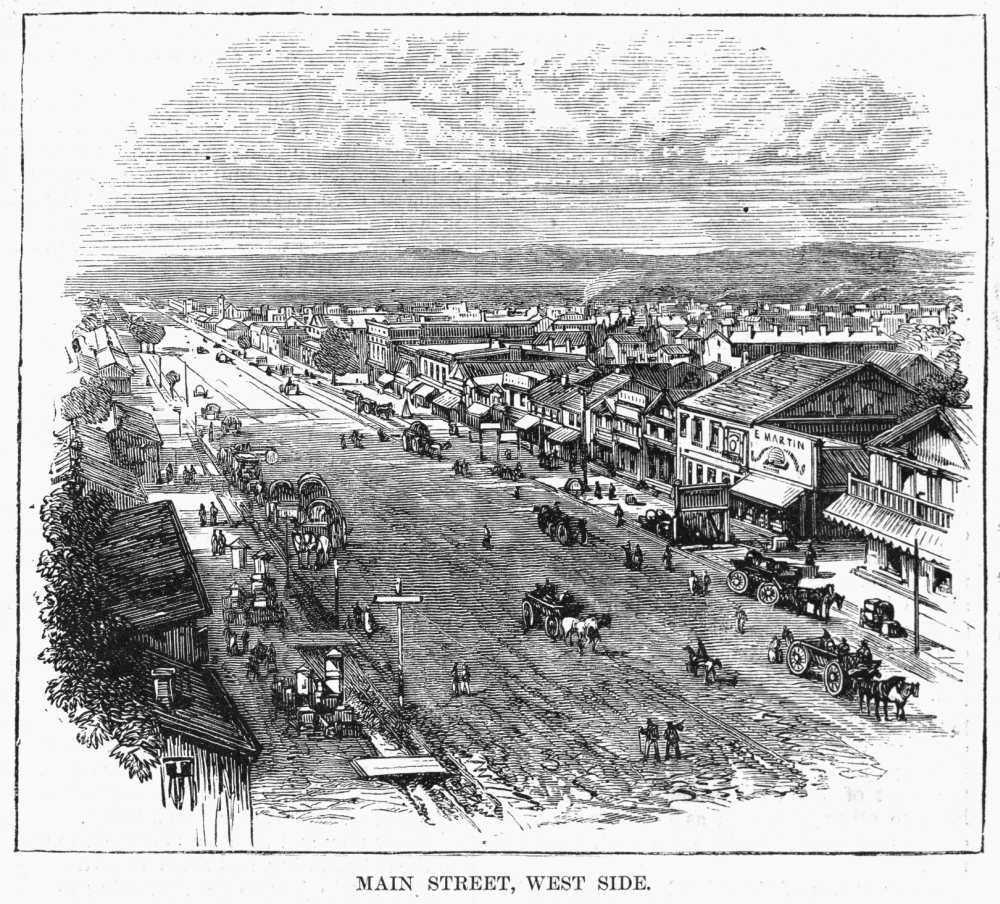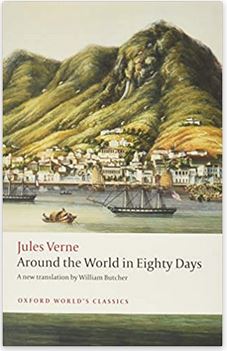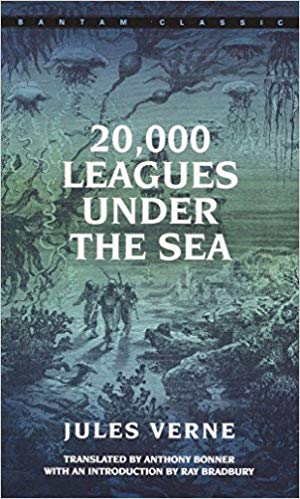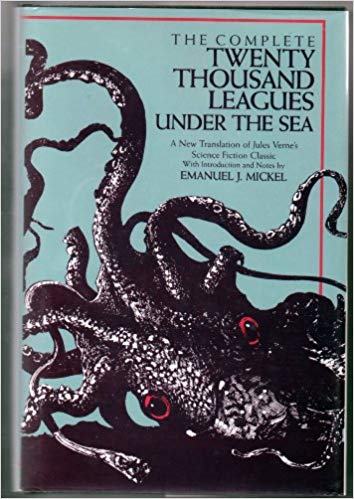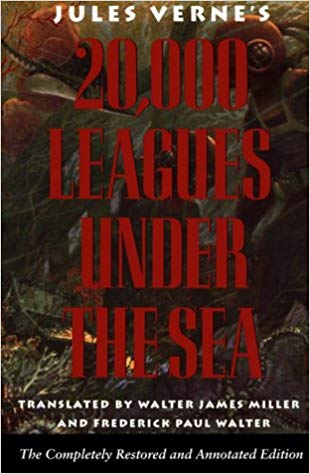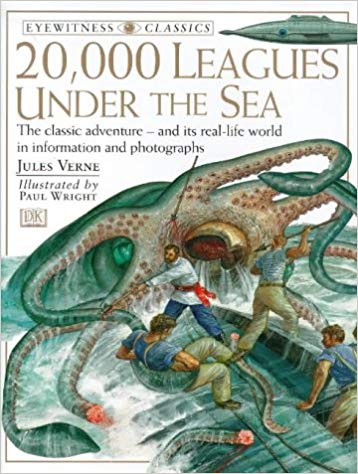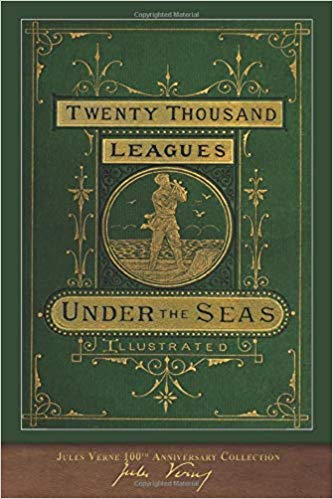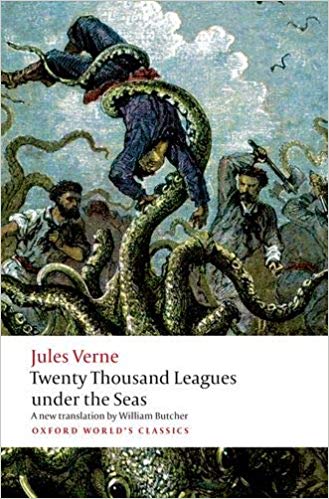Thank you, loyal readers, for joining me on this sesquicentennial journey celebrating one of Jules Verne’s greatest novels. We’re traveling Around the World in Eighty Days along with Phileas Fogg and his companions. Since leaving San Francisco by train, we’ve reached Ogden, Utah and nearby Salt Lake City. We’ve traveled 18,673 miles, 76.1% of the distance. However, we’ve taken 80% of the time, so we’re running behind.
In 1872, a large network of rail lines connected cities in the eastern U.S. states. However, only one route snaked its way from the west coast. The Central Pacific joined San Francisco with Ogden, Utah. From there, the Union Pacific brought eastbound travelers to Omaha, Nebraska.
Fogg’s party left San Francisco at 6:00 pm on December 3 and reached Sacramento at midnight, Cisco at 7:00am on the 4th, the Nevada border at 9:00am, and Reno at midday. Following that, a vast herd of buffalo delayed the train by 3 hours. Later, they entered Utah territory (not yet a state).
Verne must have assumed his reading audience shared his curiosity about the then-new religion of Mormonism. Passepartout attended a lecture about it while aboard the train, giving the author a chance to lecture readers about the faith’s history, including the practice of polygamy.
At 2:00pm on December 5, the train reached Ogden. Since the train to Omaha wouldn’t depart for 6 hours, they took a branch line for a 2-hour visit to Salt Lake City.
Ogden claims the motto: ‘Still Untamed’ and the nickname ‘Junction City.’ No city lies closer to Promontory Summit, where the Golden Spike first linked the Transcontinental Railroad in 1869. This connection, along with the Suez Canal and the Great Indian Peninsula Railway, made Fogg’s journey possible. In 1872, Lester J. Herrick served as Ogden’s mayor, and Mike Caldwell does so today.
Salt Lake City, the state’s capital, saw its first Latter-day Saints arrive in 1847. They began building the Salt Lake Temple in 1853, but wouldn’t complete it until 1893. Its population in 1872 likely fell short of 20,000 people. At the time of the novel, Daniel H. Wells was the mayor (the city’s third), and he did his share to contribute to the population. He had 7 wives altogether, 6 of them concurrently, and 36 children. Today, Erin Mendenhall serves as the city’s 36th mayor.
Traveling from San Francisco to the Ogden/Salt Lake City area today takes two hours by plane, not the 44 hours Fogg needed, and buffalo herds rarely delay airlines.
If you’ve never read Around the World in Eighty Days and are looking for a good English translation, the North American Jules Verne Society recommends the translation by William Butcher published in 2008 by Oxford University Press.
Unless some other unforeseen events occur, Fogg and his companions should reach Omaha without further incident well before the 9th. Care to wager that they will? You might as well write your check now, payable to—
Poseidon’s Scribe

